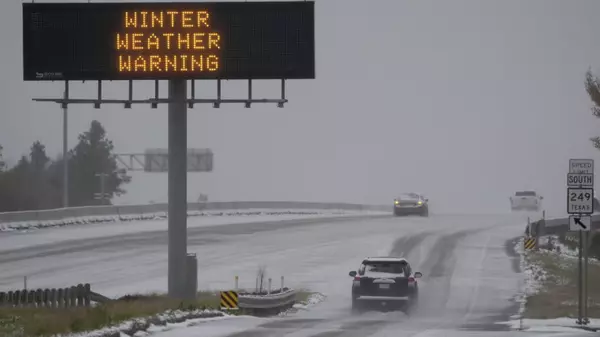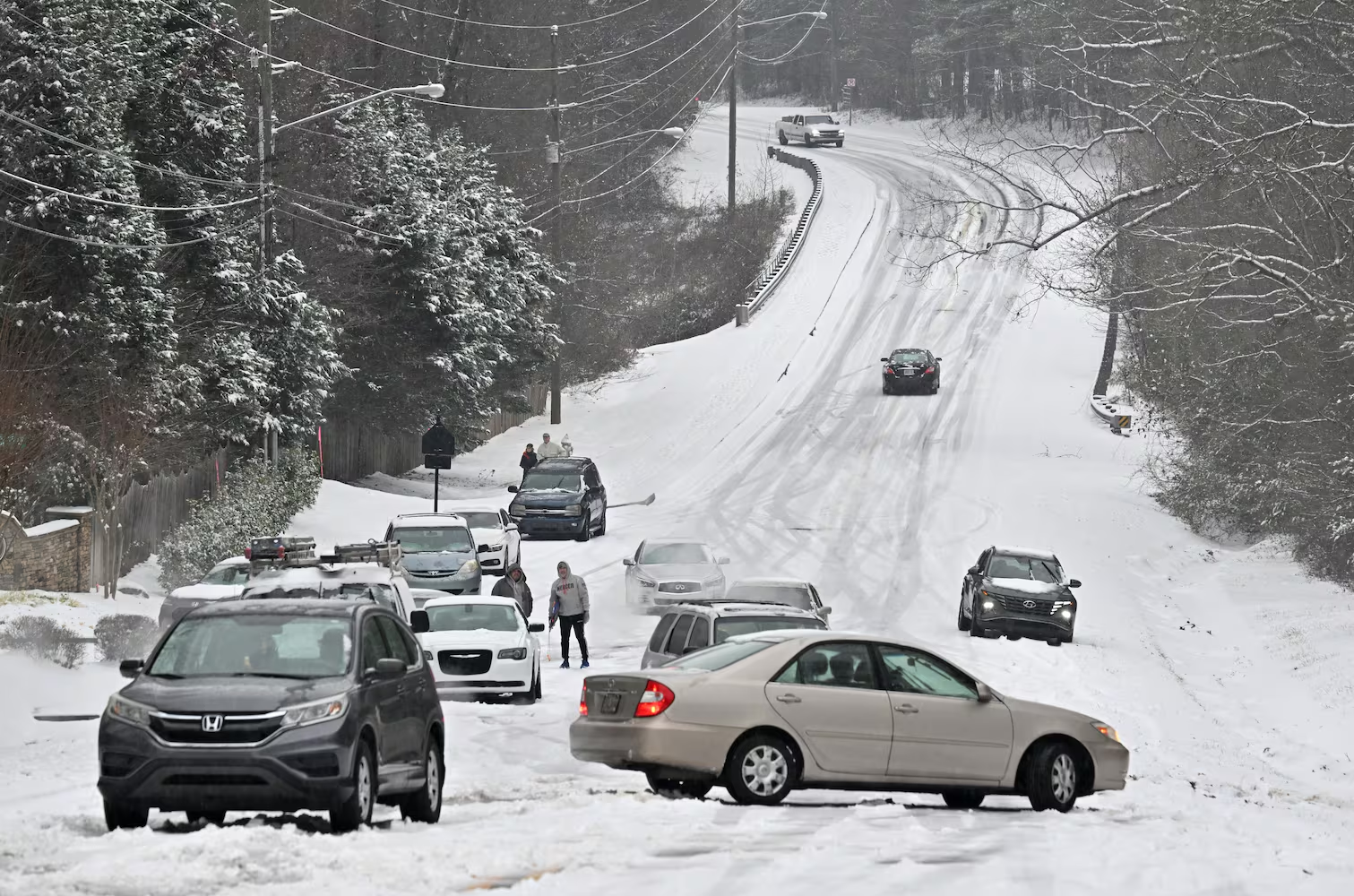A rare winter storm swept through Georgia, paralyzing communities and leaving drivers stranded on highways for hours. The unexpected snowfall and icy conditions created chaos in a state unaccustomed to such weather, forcing many to spend a sleepless night in their cars.
This unusual event has sparked discussions about preparedness for extreme weather in regions that rarely experience significant snowfall.
A Night of Uncertainty and Frustration
Drivers across Georgia faced an ordeal they never anticipated. The storm dropped only three inches of snow, but for a state ill-equipped to handle icy roads, it was enough to cause massive disruptions. On I-75 in Monroe County, traffic came to a complete standstill for miles, leaving drivers stranded for as long as 15 hours.
Emma Worley, one of the many caught in the gridlock, described her harrowing experience. “I haven’t slept,” she said, recounting the sleepless night spent in her car without food or comfort. “I’ve never experienced anything like this my whole entire life.”
Another stranded driver, Alan Burnett, shared a similar story. Trapped since 8:30 p.m. on Tuesday, Burnett said he passed the time listening to the radio and eating a few snacks but avoided sleeping due to safety concerns.
Read : Storm Froze to Death in Snowstorm in Sweden’s Lapland
Images of the traffic chaos revealed long lines of stationary vehicles on lightly snow-covered roads. The unusual weather event not only disrupted travel but also left drivers grappling with the frustration and anxiety of being unable to reach their destinations.
The guy says fuck Kia they made them stay and now they gotta drive home on the sketchy ass roads..#WinterStorm #georgia pic.twitter.com/nU4jcl5kNS
— Nova ᛤ (@NovaBEENreal) January 21, 2025
Many were unprepared for the freezing conditions, highlighting the vulnerability of regions not accustomed to winter storms.
Georgia’s State of Emergency and Response Efforts
The Georgia Department of Transportation (GDOT) declared a State of Emergency across the state as the storm unfolded. The agency acknowledged the widespread impact, with nearly three-quarters of Georgia affected by snow and ice.
Crews worked tirelessly to treat and plow the roads, but the sheer scale of the event and the lack of resources in certain areas made immediate relief difficult.
GDOT Commissioner Russell R. McMurry addressed the public, asking for patience and understanding. “This is a highly unusual winter weather event,” McMurry stated.

“Our crews cannot be everywhere at once, and we need time and warmer temperatures to restore passable conditions.” The agency urged residents to stay off the roads to allow emergency responders to carry out their work effectively.
Despite these efforts, the storm exposed the challenges faced by states like Georgia in dealing with rare but severe winter weather. Limited equipment and experience in managing icy roads hampered response times, leaving many stranded for extended periods.
The incident underscored the need for improved infrastructure and planning to handle future weather emergencies, even in regions where snow is uncommon.
Reactions and Lessons from the Storm
The storm sparked mixed reactions from residents and travelers. For those unaccustomed to snow, the experience was overwhelming and frustrating.
However, others who had grown up in colder climates viewed the situation with a sense of resignation. Mark Coombs, who was traveling from Americus to Locust Grove, remarked, “It is what it is. You go out in bad weather, you gotta deal with it.”
The snowfall also set records across the southern United States. In Savannah, Georgia, three inches of snow marked the city’s highest total since 1989.

Florida, another state unaccustomed to snow, reported a preliminary record of 10 inches in one town, which, if confirmed, would be an all-time high. These unprecedented conditions have prompted discussions about climate variability and the importance of preparing for extreme weather events in unlikely locations.
For many Georgians, the storm served as a wake-up call about the need for better preparedness. Communities and state agencies are now re-evaluating their response plans to ensure they are equipped to handle similar situations in the future.
The event also highlighted the resilience and adaptability of individuals, with some finding ways to cope despite the challenging circumstances.
The snowstorm in Georgia was a rare and disruptive event that left a lasting impression on those affected. While the immediate focus remains on recovery and restoring normalcy, the lessons learned from this experience will likely influence how the state approaches future weather challenges.
As climate patterns continue to shift, even regions unaccustomed to snow may need to adapt to the possibility of more frequent extreme weather events.
let’s enjoy few years on earth with peace and happiness….✍🏼🙏

